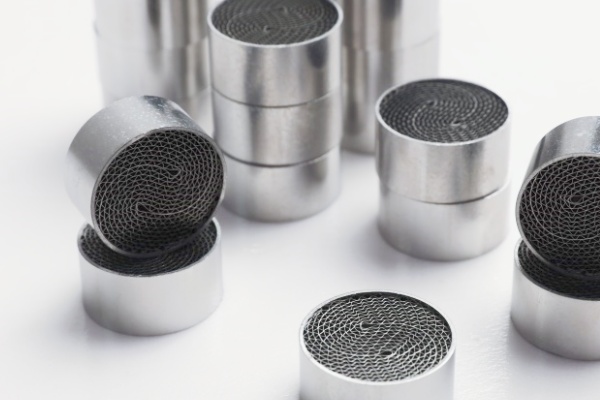To be a valuable global supplier
for metallic honeycombs and turbine parts
Release time:2025-09-26
When it comes to cleaning up diesel exhaust, one of the most important components in the aftertreatment system is the DOC metal substrate. It may not look like much from the outside, but this part plays a crucial role in making sure harmful gases are converted into something less damaging before leaving the tailpipe.

At its core, the DOC metal substrate is designed to handle three main targets in diesel exhaust: carbon monoxide, unburned hydrocarbons, and the compounds that eventually lead to particle formation. Without it, these substances would head straight into the atmosphere. By using a catalytic coating on a durable metal honeycomb base, the DOC creates an environment where these pollutants are oxidized into less harmful forms like carbon dioxide and water vapor.
One big advantage of a DOC metal substrate over traditional ceramic bases is its strength and heat resistance. Diesel engines run under tough conditions, with high vibrations and rapid temperature changes. A metal base can handle that environment better, offering longer service life while keeping flow resistance low. That means the exhaust can pass through smoothly without causing extra backpressure, which helps maintain engine performance.
Another key point is how the DOC metal substrate supports the entire aftertreatment chain. By oxidizing hydrocarbons, it generates the heat needed to regenerate a diesel particulate filter (DPF). Without that extra boost, the filter could clog up faster, leading to higher maintenance costs. In this way, the DOC isn’t just cleaning gases directly; it’s also enabling other parts of the system to work properly.
In industrial engines, trucks, or off-road machines, the role of the DOC metal substrate remains the same—cutting down harmful emissions while keeping the system reliable. With stricter regulations worldwide, its importance is only going to grow.
In short, the DOC metal substrate is not just a piece of metal with a coating—it’s the first line of defense in modern diesel emission control. By lowering carbon monoxide, hydrocarbons, and particle precursors, it makes diesel power cleaner and helps engines meet the environmental demands of today and tomorrow.